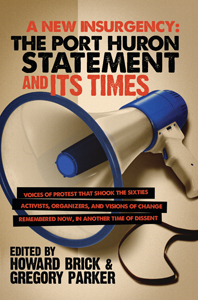
A New Insurgency: The Port Huron Statement and Its Times
Skip other details (including permanent urls, DOI, citation information): This work is licensed under a Creative Commons Attribution-NonCommercial-NoDerivatives 3.0 License. Please contact [email protected] to use this work in a way not covered by the license.
For more information, read Michigan Publishing's access and usage policy.
IV. Comparisons: Global New Lefts

The largest context of the new insurgency was global. Most generally, the social and political realities of the Cold War and decolonization, as those became intertwined, shaped the world the New Left inhabited. We can recognize a more particular nexus of relations, still profoundly transnational, that fostered the rise of a New Left in exchanges between writers and activists in the United States, Britain, France, and Germany—as we learn from Michael Vester’s first-person testimony and Rita Chin’s historical survey. The political incitements to protest in these sites, we know, reached beyond that “Western” center—to Eastern Europe, due to the catalytic effect the Soviet suppression of the Hungarian revolution had on Western European Marxists (as well as the influence of Polish dissidents of 1956 on them); to what came to be called “the Third World,” via the imperialist imbroglio of Suez, the Algerian war and its effect on France itself, the Cuban Revolution, the movement into Britain of people from its prior colonial possessions (particularly the West Indies and South Asia); and to the war in Vietnam. The mutual affinity between African independence movements and the African American freedom struggle set another essential coordinate to the period.
The new lefts arising in that time around the world could be found near and far. In the Caribbean, aside from Cuba, a current of West Indian radicalism stimulated by the independence of former British possessions, stretching from Jamaica to Trinidad and Tobago in 1962, strove for genuine decolonization—that is, social, cultural, and economic autonomy, free of the great powers, as described here by Paul Hébert. A Mexican left also sympathized with the Cuban Revolution circa 1960, though a full-blown student movement only emerged there later, in the wake of government repression (and mass murder) of protesters in 1968, as Louise Walker shows us. Further afield, and with fewer direct reverberations on the US scene, young militants in Japan from the student associations known as Zengakuren set themselves off from the Communist Party around 1960 and commenced a new left there. In this volume, Leslie Pincus discusses a unique element of new dissent in Japan that reflected postwar pacifism and an orientation toward the transformation of everyday life interestingly akin to American counterculture.
—Howard Brick


